


Get to know Iceland
Iceland in March combines winter conditions with growing daylight and fewer crowds, making it a favorable time for campervan travel. While conditions remain cold with temperatures typically ranging from -5°C to 3°C (23°F-37°F), and road access can be limited, especially at higher elevations, these factors are manageable with proper preparation.
This period offers access to seasonal activities like glacier hiking, ice caving, whale watching, and lava caving, along with strong northern lights visibility.
Campervan travel remains a practical and common way to explore Iceland during this time, providing flexibility to reach remote sites and enjoy natural attractions. Proper insulation, reliable heating systems, and 4-wheel drive capability help ensure comfort and safety across varied terrain.
Most main routes, including the Ring Road, remain open, though highland and mountain roads can be closed due to snow or ice. Using real-time weather and road condition apps allows travelers to plan routes effectively and adjust as needed.
With thoughtful preparation, March becomes an ideal month for campervan travel, combining winter adventure, natural beauty, and the independence to experience Iceland’s diverse environments directly from the road.
Iceland in March transitions from deep winter to early thaw, creating unpredictable conditions that directly affect travel. Storm systems bring strong winds, shifting snowpack, and variable ice coverage, especially in inland and highland areas, while coastal regions face sleet, spray, and sharp wind chill. Compared to Iceland in February, conditions may slightly ease but remain severe and highly variable.
These factors demand layered clothing and careful planning for campervan heating, road traction, and daily movement.
Daylight gradually increases from about 10 to 13 hours, improving visibility but still requiring lighting for early mornings and evenings. Wind patterns, frost depth, and storm frequency shape travel timing and route access across the country.
Northern Iceland records lows of -10°C (14°F) in early March, requiring high insulation and auxiliary heating to prevent cold starts and ensure sleep comfort. Daytime temperatures range from -5°C to 2°C (23°F–36°F), with wind chill further reducing the ambient temperature, increasing fuel consumption, and placing a greater load on the battery.
Southern Iceland, including Vík and Selfoss, ranges from 0°C to 5°C (32°F-41°F) by day and around -2°C (28°F) at night. Oceanic moderation limits deep freezes, but freeze-thaw cycles affect road traction. Heating remains efficient if insulation is adequate.
Highlands like Landmannalaugar and Kjölur stay below -8°C (17°F), peaking near -3°C (27°F). Campsites require auxiliary heat, insulated tanks, and sealed cabins; unreinforced setups are unsuitable.
Eastern areas such as Egilsstaðir vary between -6°C and 2°C (21°F-36°F), with Arctic fronts causing rapid frost. Heating demands increase power consumption, limiting the range of single-battery vehicles.
Western Iceland, including the Snæfellsnes Peninsula, experiences temperatures ranging from -3°C to 4°C (27°F to 39°F). Coastal airflow reduces frost, but condensation risks persist without proper insulation and ventilation.
Across Iceland, March nights remain sub-zero despite early spring shifts. Preheating, fuel control, and monitoring tools are essential.
In March, snow and ice patterns vary sharply by elevation and region. Lowland areas in the south and west, including Reykjavík, begin to thaw mid-month as daytime temperatures rise; however, nearby valleys above 300 meters often remain snow-covered into late March.
Highland routes remain deeply snowbound throughout the month due to persistent cold and limited sunlight, keeping F-roads buried and impassable, even for 4×4 vehicles.
Inland regions near Akureyri and Egilsstaðir experience daily thawing and nightly refreezing by mid-March, resulting in the formation of black ice on shaded roads and bridges that reduces traction and increases braking distance.
Across the Ring Road, freeze-thaw cycles by late March create adhesive ice patches in poorly drained areas, especially on north-facing slopes and in narrow gullies near Mývatn, where studded tires or chains are essential.
Overnight icing near water or at elevation causes windshield and undercarriage freeze, increasing defrosting time and heating demand, particularly in campervans without auxiliary heat.
March in Iceland brings frequent, fast-developing wind patterns that generate localized storms and disrupt campervan travel. These events occur due to sharp pressure drops in Atlantic low-pressure zones, forming wind corridors that generate gusts of 60–100 km/h (37–62 mph), with peaks exceeding 120 km/h (75 mph), particularly along the South Coast and highlands.
The South Coast, Snæfellsnes Peninsula, and the Highlands face the highest crosswind exposure, where open routes and bridge crossings often become hazardous. Storm frequency is greatest in early and mid-March, easing later in the month, with most lasting several hours depending on pressure movement.
The Icelandic Met Office defines storm events as sustained winds over 18 m/s (65 km/h or 40 mph), often triggering travel warnings and emergency closures. These storms reduce visibility, intensify wind chill, and increase fuel use due to resistance.
Campervan travel during March requires dynamic route planning. Tools like the Veður app support real-time storm tracking, identification of safe pull-off areas, and avoidance of exposed terrain, helping drivers adapt quickly to Iceland’s volatile weather.
In March, Iceland gains daylight from 10 to 13 hours, with Reykjavík sunrise shifting from 8:30 AM to 6:45 AM and sunset from 6:45 PM to 8:15 PM. This increase extends travel hours but introduces low solar angles that reduce optical range and cause glare.
Morning and evening shadows, combined with midday snow reflection, distort visibility and impair hazard perception, especially in open, sunlit areas. Snow glare peaks at noon, increasing exposure to snow blindness.
Fog, blowing snow, and storms create meteorological opacity, with whiteouts and cloud cover limiting perceptual distance and compressing driver reaction time, particularly in coastal and highland zones.
Twilight and low-light conditions require headlights, fog lights in dense valleys, and active defrost systems to manage interior fogging. Auxiliary lighting is critical for spotting snowdrifts and icy patches.
Daily visibility forecasts help align travel with the peak daylight hours. Routes and photography are best scheduled between 10:00 AM and 4:00 PM for maximum clarity and reduced visual disruption.
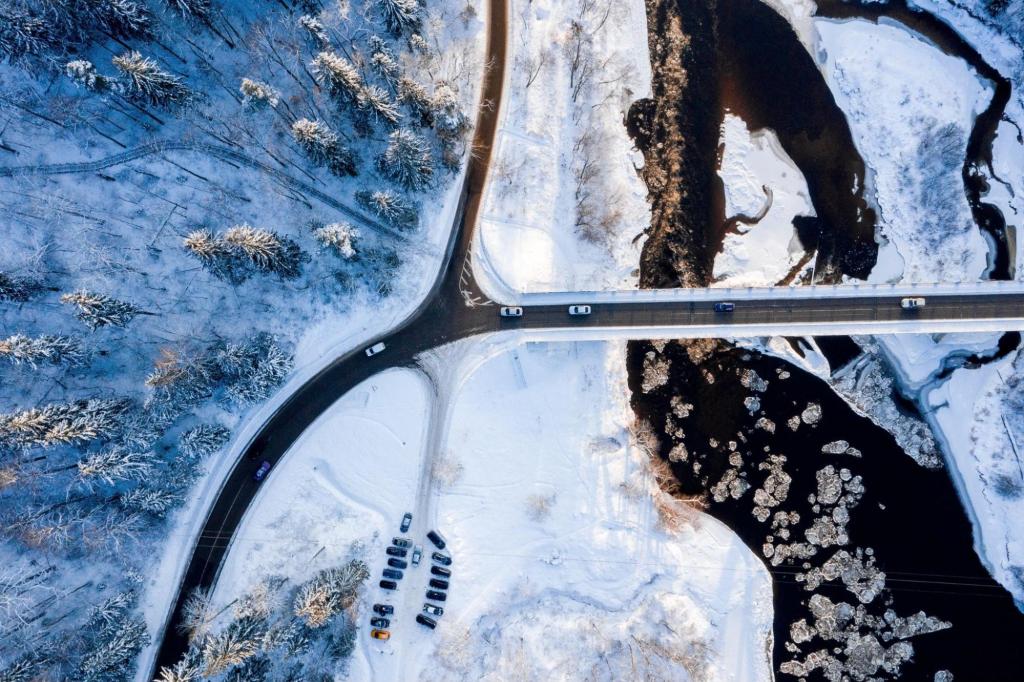
March in Iceland brings fluctuating snow, thaw, and wind that destabilize road surfaces through black ice, wet-ice layers, and slush, all of which reduce traction and extend braking distances.
The Ring Road, although well-maintained, can close during storms or periods of low visibility, while secondary and urban roads, especially in the north and east, often deteriorate into icy ruts. F-Roads remain fully closed under snowpack. Surface states vary rapidly across regions, demanding local awareness.
Elevation shifts trap freeze layers in mountain passes and cause gravel slips near coastlines, complicating campervan control, as tall profiles sway in wind, weight increases stopping distance, and mixed surfaces hinder parking.
Storm closures, detours, and ice redeposition are constant risks, making real-time monitoring of temperature, elevation, and visibility essential. These conditions frame the need for updated insights on Ring Road access, F-Road restrictions, and digital navigation tools.
The Ring Road (Route 1) remains mostly accessible in March across southern and urban areas due to low elevation and consistent snow clearance. Conditions worsen in the Eastfjords, where coastal winds and snowdrifts raise the avalanche risk and trigger frequent closures by Vegagerðin.
Northern mountain passes near Akureyri and Mývatn are prone to black ice and low visibility due to freeze-thaw cycles, necessitating the use of studded tires, speed reduction, and route flexibility.
Between Höfn and Vík, wind gusts over 80 km/h destabilize campervans and obscure signage, often forcing detours. Western sections are steadier but prone to morning ice from fjord microclimates.
F-roads, Iceland’s highland routes, are closed in March by law due to snowpack, unstable terrain, and lack of maintenance. Governed by Vegagerðin, these gravel tracks are shut from October to mid-June and differ from all-season roads like the Ring Road, which remains open and maintained.
In March, deep snow, blocked river crossings, low visibility, and avalanche risk render F-roads impassable, including for 4×4 vehicles. No services, navigation aids, or emergency support are available. All highland infrastructure is inactive, and 4×4-only signage does not apply under winter conditions.
GPS systems often misroute travelers through closed F-roads, ignoring legal and seasonal restrictions. Unauthorized entry results in vehicle damage, fines, rescue operations, and risk to emergency services. All highland access is prohibited in March; routes must be planned using maintained lowland roads.
March in Iceland brings unstable weather that makes GPS tools like Google Maps ineffective, as they lack real-time closure and hazard data. Vedur.is, from the Icelandic Meteorological Office, provides wind forecasts, storm tracking, and visibility bands that determine safe road use.
Umferdin.is, run by Vegagerðin, delivers immediate closure alerts and road surface warnings, overriding GPS directions and enabling adaptive routing. Safetravel.is, based on civil defense data, escalates hazard levels and acts as the national travel advisory protocol.
These platforms dictate when to drive, stop, or reroute, and must be checked multiple times daily to avoid whiteouts, wind gusts over 70 km/h, and blocked roads.
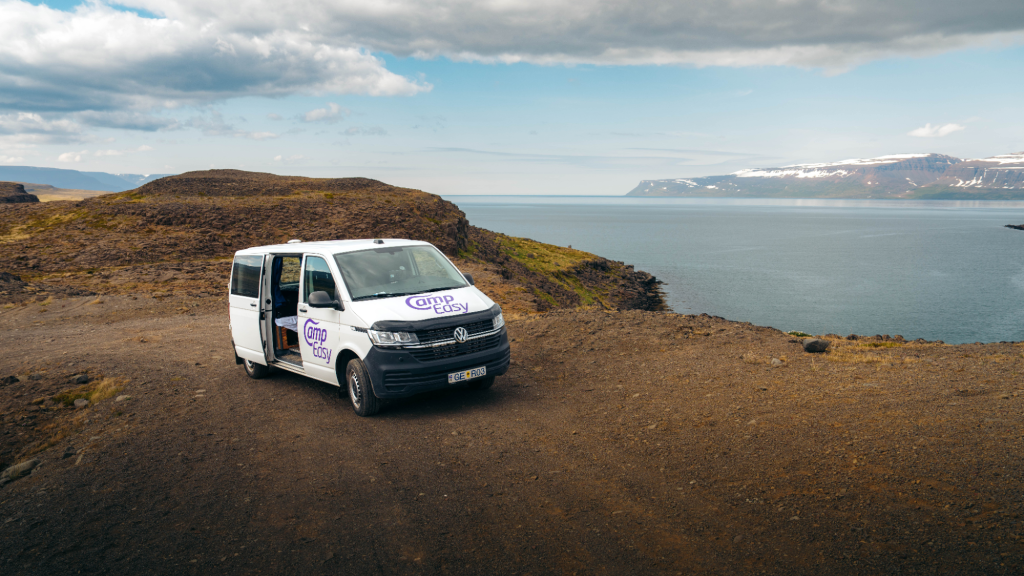
March travel in Iceland requires campervans built for cold, wind, low light, and unstable terrain. Vehicles without thermal insulation, auxiliary heating, 4×4 drivetrains, and dual battery systems will fail operationally. Iceland campervan travel in winter demands equipment suited for continuous exposure to sub-zero conditions and unpredictable weather shifts.
Heating systems must operate independently of the engine; diesel-fueled units are essential for overnight temperatures as low as -5°C. Passive insulation is inadequate; frost must not breach floors, walls, or ceilings, or fuel use and system stress will spike.
Only 4×4 drivetrains deliver the traction and stability needed for slush, black ice, and steep, wind-exposed routes. 2WD models consistently lose control or stall on variable snow compaction and elevation changes.
Power systems must remain stable through cold, dark periods. High draw from heating, lighting, defrost, and navigation drains batteries rapidly. Single setups fail overnight; dual systems with managed discharge are mandatory.
A March-ready campervan is defined by its capacity to retain heat, maintain movement, and power all systems in Iceland’s most demanding travel window.
March campervan travel in Iceland demands engine-independent heating and high-performance insulation to counter subzero nights, snow accumulation, and wind chill. This system ensures interior stability, prevents condensation, and protects energy systems.
Diesel heaters, such as Webasto or Planar, can run for 10 hours or more, using 0.1-0.2 liters of fuel per hour, providing continuous heat. Electric units require shore power and fail off-grid. Engine-based systems lack autonomy and pose safety risks.
Closed-cell foam insulation with high R-value blocks thermal bridging and retains heat. Vapor barriers and sealed window covers prevent degradation and stop condensation on freezing surfaces.
In March, Iceland’s terrain demands drivetrain systems that maintain traction and control. 4×4 campervans distribute torque across all wheels, handling slush, snowpack, and lateral winds, while 2WDs, limited to one axle, often lose grip on icy gradients and curves, especially in eastern and northern elevations.
Wind-exposed routes like those in Suðurland destabilize high-profile vans, but 4x4s reduce drift and rear slip through balanced power, maintaining lane stability even in gusts exceeding 60 km/h. Braking exposes further risk, as 2WDs show poor force distribution on descents, increasing slippage and crash potential, especially near Mývatn or Dettifoss, with insurance often voided during storm alerts.
While 2WDs may suffice in clear southern stretches, 4×4 is essential for fjords, tunnels, and northern access, ensuring traction recovery, elevation reach, and storm resilience across unpredictable March conditions.
Campervans in Iceland rely on a dual battery system: the main battery for ignition, and the auxiliary battery for powering heating, lighting, USB ports, the fridge, and the water pump.
In March, subzero temperatures and long nights cause thermal degradation, passive drain, and reduced charge retention, leading to rapid battery depletion even without active use.
Short drives offer insufficient alternator recharge, preventing full recovery between uses. Solar panels fail under low light and poor angles, leaving shore power as the only reliable source, which is often unavailable due to closed or unequipped campsites. Without recharging, voltage drops trigger system shutdowns, cutting heat and lighting when needed most.
To avoid power loss, monitor voltage, limit usage to essentials, and prioritize heating. Confirm the battery’s amp-hour rating, insulation, and cold-crank specifications before renting, as unmanaged power in March means guaranteed failure.
Most Icelandic campsites remain closed in March due to snow, limited utilities, and legal restrictions. Availability requires access to shore power, operational toilets, and water; without these, sites are not permitted for overnight use.
Campsites in Iceland remain semi-open with variable service levels dependent on daily conditions. Status must be verified through Parka, SafeTravel, or campsite directories, as assumptions risk legal penalties and trip disruption.
The Reykjavík area and South Coast offer the highest availability, while East, North, and Westfjords are largely inaccessible. Wild camping is prohibited, and only verified powered sites ensure legal and functional overnight stays.
Campsite access governs route pacing, stop locations, and energy planning. Every itinerary must include a confirmed alternative, as inaccessible sites can leave vehicles stranded.
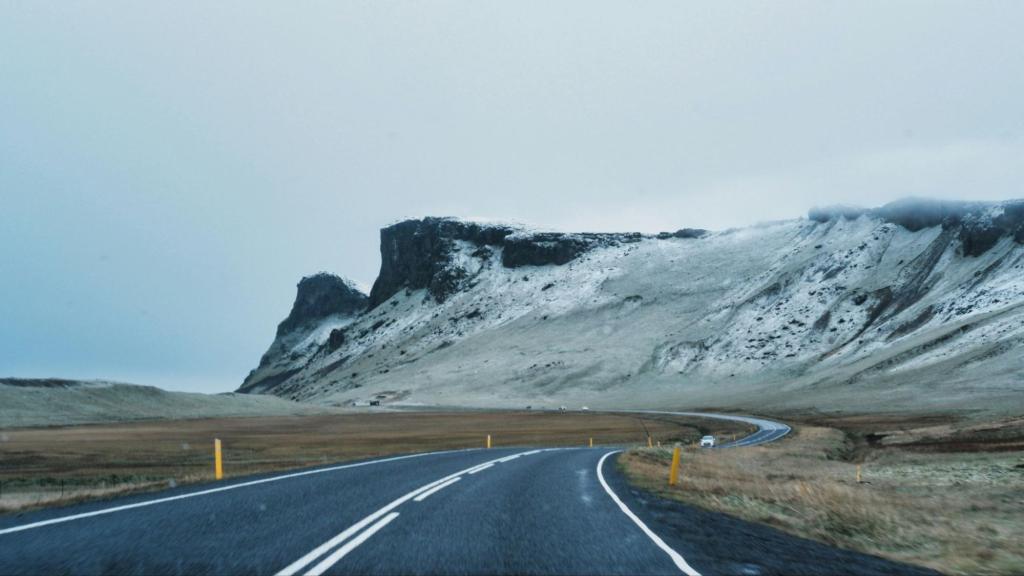
In March, Iceland’s South Coast offers the most reliable winter driving due to Route 1’s low elevation, frequent plowing, and proximity to Reykjavík. Seljalandsfoss and Skógafoss remain accessible but require early stops, as icy footpaths and thaw-refreeze parking reduce traction.
Sólheimajökull is viable with proper footwear, while Reynisfjara and Dyrhólaey pose storm-related hazards, including unexpected wave surges and severe wind gusts, making shoreline visits and narrow roads particularly dangerous, especially for high-roof campervans.
Vík, offering fuel, food, and restrooms, is the safest overnight point if weather worsens; conditions east of it often involve closures and poor visibility, requiring live road checks.
A one-day loop covers Seljalandsfoss, Skógafoss, and Reynisfjara; two days allow for Sólheimajökull and Vík, if planned around daylight and favorable weather conditions.
March offers the safest route for campervan travel along Iceland’s South Coast due to consistent plowing on Route 1, low elevation, and clear roadside boundaries.
Seljalandsfoss, Skógafoss, and Sólheimajökull remain accessible, though thaw cycles cause icy parking and snow-compacted footpaths, requiring proper traction gear. Reynisfjara faces lethal sneaker waves during wind surges, and Dyrhólaey’s exposed cliffs pose a serious risk to campervan stability.
Vík serves as a supply stop and common turnaround, offering fuel and food, though slushy lots can trap low-clearance vehicles. Beyond Vík, plow frequency drops, snow depth increases, and detours become more likely.
Three stops per day push the limit under short daylight and unstable traction. Storms may close routes without notice, making real-time condition checks and flexible planning essential. Overnight stays should focus on service-supported areas, such as Vík.
The Snæfellsnes Peninsula in March allows access from Reykjavík within 2.5 to 3.5 hours, but only under clear weather conditions, as wind, fog, and black ice frequently disrupt its 90 km loop. Kirkjufell, Arnarstapi, Hellnar, Búðir, and Djúpalónssandur are conditionally accessible, with icy roads, gravel detours, and wind-exposed curves requiring reduced speed and flexible routing.
Western segments may close when gusts exceed 70 km/h, and snowdrifts often block cliff paths. Umferdin.is checks are essential, as storm shifts can alter access in minutes.
Fuel is scarce past the southern entry, and all campsites remain closed, limiting travel to clear-sky day loops with returns to Borgarnes or Reykjavík. Each stop is weather-dependent, and while a full loop is possible, most trips are segmented by the impact of storm fronts.
The Eastfjords in March are Iceland’s most weather-restricted zone, reached only via steep, narrow detours from the Ring Road, where snow, ice, and avalanches routinely block access. Viable entry is limited to Egilsstaðir, Fáskrúðsfjörður, and Seyðisfjörður when umferdin.is and vedur.is showing open routes.
Drives beyond these points encounter black ice, fuel gaps exceeding 100 kilometers, and a lack of active support or campsites. Wind exposure and cliffside slippage risks demand winterized 4x4s with full fuel, heating, and real-time monitoring.
Overnight stops are either unsafe or prohibited, and access to power and food is minimal until April. Travel east of Egilsstaðir only if all conditions align; otherwise, bypass entirely. This is not a scenic stop, but a conditional route that requires strict planning.
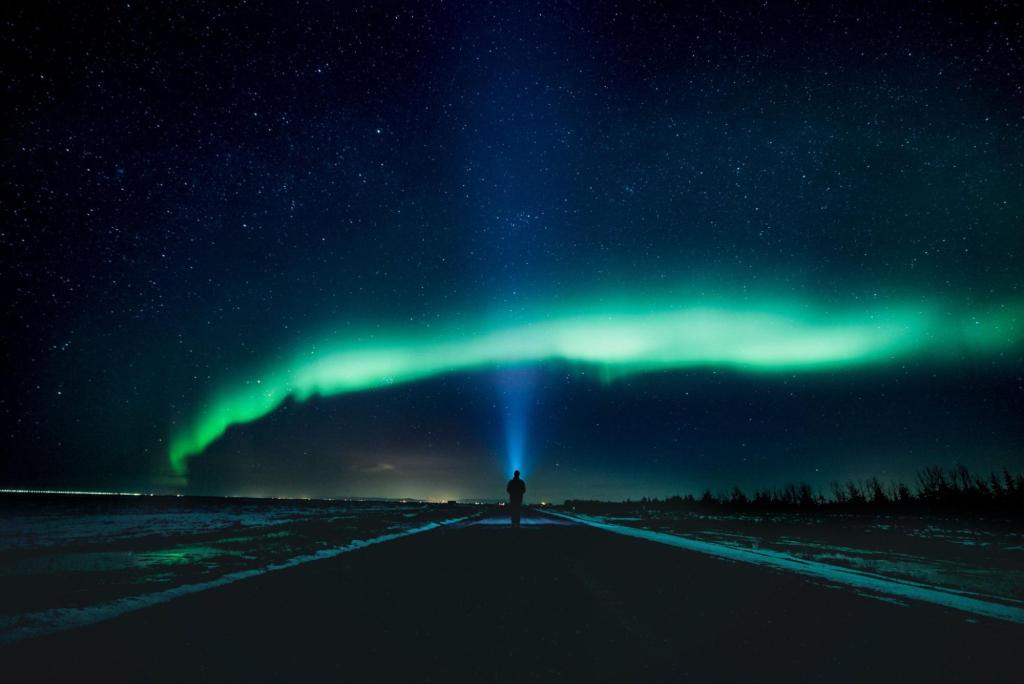
March offers a strong aurora probability with 10 to 13 hours of darkness and increased geomagnetic activity around the spring equinox. Visibility requires a KP index of at least 3, clear skies, and dark, rural locations far from city lights. Cloud cover and light pollution fully block the aurora, making Reykjavík a poor choice for observation.
Campervans provide access to rural visibility corridors, such as the South Coast, Snæfellsnes, and Vík, where dark sky radii minimize urban glow. Use tools like Vedur.is or My Aurora Forecast to align the location with live KP data. Always park safely in legal spots, not on roadways.
Thermal preparation is essential, as March nights can be cold. Power must support heating, alerts, and camera gear during long, stationary viewing.
In March, Iceland offers a range of winter activities, including ice caving, glacier hiking, whale watching, geothermal bathing, and lava caving, each shaped by the weather, daylight, and road conditions.
Ice caves in Vatnajökull and glaciers on the South Coast require guided tours, proper gear, and daylight planning.
Whale watching runs from Reykjavík and Akureyri, with humpback sightings rising later in the month, though tours remain weather-sensitive.
Geothermal bathing is fully accessible, with roadside pools near the Ring Road ideal for self-guided campervan stops.
Lava caves in Snæfellsnes need guided entry due to snow and limited visibility.
Each activity is detailed below, including route access, gear requirements, and tour options for March travel.
March offers peak ice cave access in Iceland, with stable formations resulting from sustained cold. However, all tours are guide-only due to safety and legal considerations. Most depart from Vatnajökull near Jökulsárlón, with others departing from Vík or Höfn, all of which are reachable via the South Coast Ring Road.
Tours remain weather-dependent, often cancelled by sudden melts or storms, so flexible plans and confirmed bookings are essential. Gear like helmets and crampons is provided, but warm, wind-resistant clothing is still required. As a March highlight, ice caving is unmatched when planned smartly and guided professionally.
Glacier hiking is available in March as a top guided activity, strictly led by licensed guides, as solo access is prohibited. Key sites, such as Sólheimajökull near Vík and Falljökull in Vatnajökull National Park, are accessible via the Ring Road and fit well into campervan routes.
Tours depend on daylight and stable weather, with gear like crampons, helmets, and ice axes provided. Most hikes last 2-3 hours, require moderate fitness, and must be booked with a professional guide to ensure safety and adaptability to the conditions.
Whale watching in Iceland runs year-round, including March, but tours depend on weather and sea conditions. Reykjavík harbor is the most reliable departure point, offering daily tours and easy access to the Ring Road, which is ideal for campervan travelers. Northern ports, such as Akureyri and Húsavík, face harsher conditions and limited accessibility.
Humpback whales are most commonly seen in March, with occasional sightings of orcas and dolphins, although nothing is guaranteed. Tours may be canceled at the last minute due to inclement weather, so booking flexibility is crucial.
For March road conditions and routing, Reykjavík offers the safest, most efficient base.
Hot springs remain accessible in Iceland throughout March, with commercial spas like the Blue Lagoon, Sky Lagoon, and Mývatn Nature Baths offering year-round thermal bathing, heated facilities, and reliable access. Iceland hot springs are ideal for campervan travelers near Reykjavík, where early booking is recommended.
Natural pools such as Seljavallalaug, Reykjadalur, and Landbrotalaug require trail access that may be blocked by snow or ice, making road-safe options the smarter choice. Regardless of location, bring a swimsuit, towel, and warm clothing, as water stays hot but the air remains cold.
Lava caving is offered year-round in Iceland, including March, but only through guided tours. Raufarhólshellir near Reykjavík offers easy, paved access for short campervan trips, while Vatnshellir in Snæfellsnes depends on weather and road conditions.
Both are protected lava tubes with tours providing helmets and headlamps. Interiors remain stable in March, although icy and slippery paths may affect access. Tours last one to two hours, require moderate effort, and once inside, the weather has minimal impact.
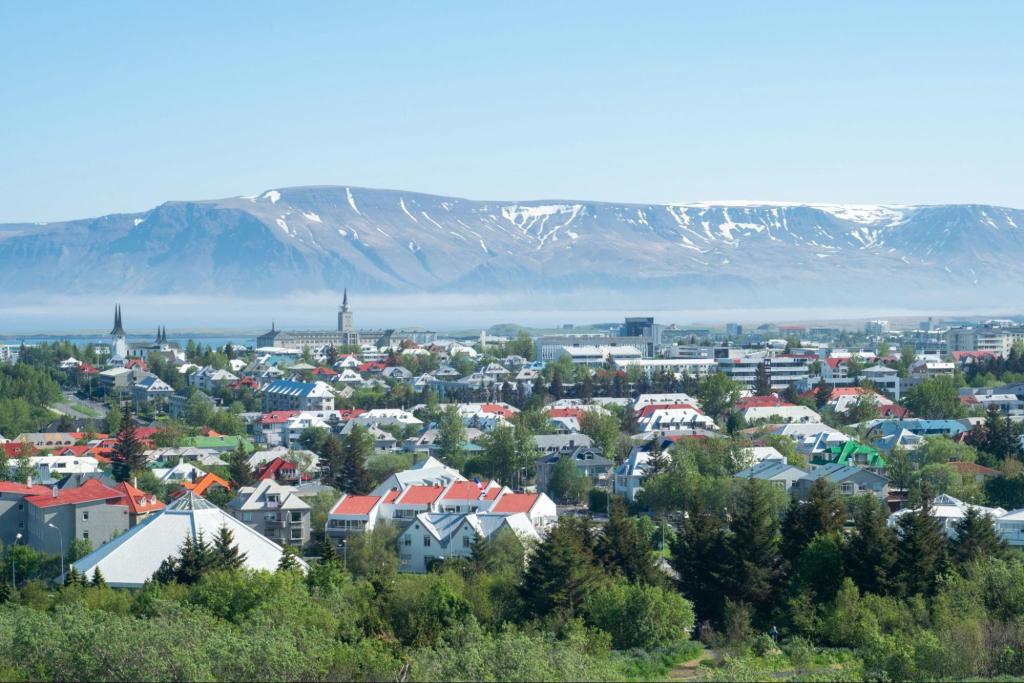
Held in Reykjavík each March 1st–4th, the Icelandic Beer Festival marks the end of the 74-year beer ban, usually hosted at KEX Hostel or similar venues. This ticketed, multi-day event features Icelandic craft breweries, international collaborations, tastings, pairings, brewery talks, and live music; early booking is advised.
Campervan travelers near Reykjavík can easily access campsites and walkable areas, with public transport or taxis recommended due to the strict DUI laws.
The Reykjavík Folk Festival takes place annually in March over three days in central Reykjavík, featuring Icelandic and Nordic folk music in both traditional and contemporary acoustic styles.
Held in small venues like Kex Hostel, it offers intimate live sets suited to campervan travelers staying nearby, fitting non-driving evening plans during stormy weather. With flexible ticket options, it offers a relaxed and culturally rich pause within the Reykjavík itinerary.
DesignMarch is Iceland’s annual March design festival, held over four days in Reykjavík and showcasing local and international innovation in architecture, fashion, product design, and visual culture.
Events include exhibitions, installations, talks, workshops, and open studios held across various city venues, many of which are free or low-cost, and most are welcoming to walk-ins. Easily accessible by foot or public transport, it suits campervan travelers near Reykjavík and offers a visual, interactive, and weatherproof way to spend March days.
Held in Reykjavík each mid to late March, the Reykjavík Open is an international indoor chess tournament drawing grandmasters and amateurs to venues like Laugardalshöll. Spanning several days, it offers free or low-cost spectator access, with most attendees observing rather than competing.
Easily accessible from city campsites or urban parking, it suits campervan travelers seeking a weatherproof cultural stop and insight into Iceland’s rich heritage.
Travelers in Iceland during March should wear thermal base layers, insulated mid-layers, windproof and waterproof shells, and sturdy, insulated boots to stay dry and warm in snow, wind, and rapidly changing weather conditions.
Wool or synthetic base layers manage moisture and retain heat, while fleece or light down provides insulation. Outer shells block storms and wind. Insulated pants with waterproof overpants are essential for wet or snowy terrain, while footwear must offer insulation, water resistance, and a strong grip; ice cleats are crucial for icy roads and trails.
Headwear, gloves, and a scarf or buff prevent heat loss, and sunglasses reduce glare from snow and low-angle sunlight. For campervan use, indoor shoes, a dry mat or bag, and a headlamp support comfort and organization during cold, dark evenings.
A swimsuit is useful for hot springs despite cold, changing conditions. March’s volatility requires smart layering to ensure comfort and readiness for all weather.

CampEasy Opening hours 09:00-16:00
Learn more about Self-Service
A minimum of 20 hours notice is required to use the booking engine. Click here to contact us directly for a booking less than 20 hours from now.
Change Date